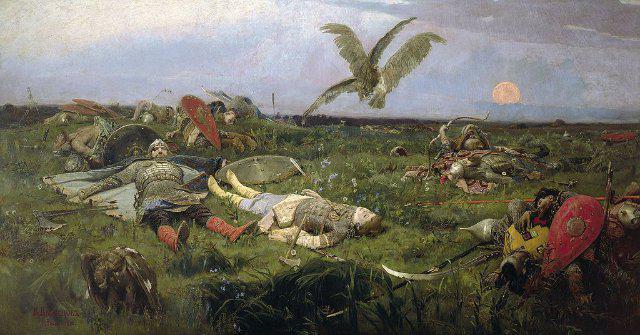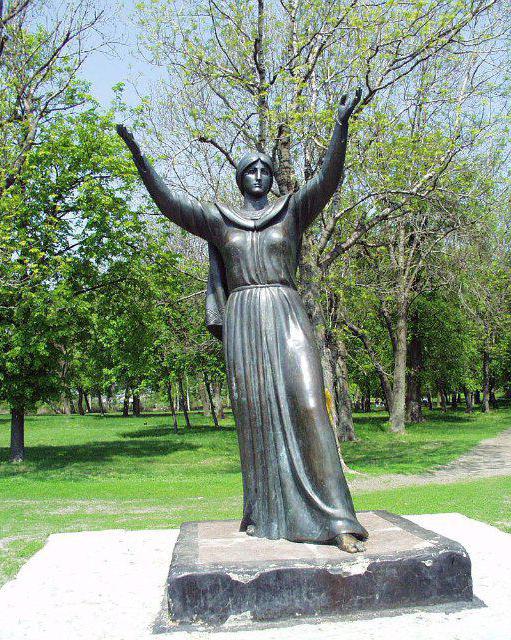If we talk about ancient Russian literature, then the central place is given to the chronicle “The Word of Igor's Campaign” or simply “The Word ...”. This is truly a masterpiece that managed to reach our days, revealing to the world the unique culture of our ancestors in its purest form. The image of Yaroslavna in The Word of Igor's Campaign is not the main one, but it can be safely called one of the best. But let's talk about everything in order.
The plot of the epic work
Before you consider the image of Yaroslavna in "The Word of Igor's Campaign", it is worth knowing the whole plot of the work. It begins with an introduction in which the author (he is unknown) praises the heroism of the history of his people. In short lines, he mentions the legendary singer Boyan, and Trajan, and epic heroes, and talks about the battles of the princes of the Russian land. There are also responses from pagan beliefs in them: the author speaks of the deities of the sun, winds, livestock, which were worshiped by the ancestors of the Russians.
The image of Yaroslavna in the “Tale of Igor’s Regiment” will appear only in the third chapter, and before that an unknown poet talks about Igor - the Novgorod-Seversky prince, who is going on a campaign against the Polovtsy. He encourages his warriors and sets out on a campaign, despite the strange signs bestowed by fate. He neglects the eclipse promising failure, and throws the army into battle. Inspired by the first luck, he is in no hurry to return, for which he is cruelly paying. When the main forces of the nomads arrived, the Russians were not ready. As a result, almost the entire squad of the prince perishes, and the surviving soldiers are captured.

The news of the tragedy quickly spreads across the Russian land, overtaking in Putivl the young wife of Prince Igor. The Grand Duke of Kiev gathers all the rulers of the specific principalities, urging them to unite and redeem Igor from captivity. The so-called golden word of Svyatoslav encourages the Russians to unite, because then they will become a thunderstorm for everyone. Then Igor’s escape from captivity is described, the pursuit sent by the nomads after him. But he successfully reached his native lands and returned to his faithful wife.
The image of Yaroslavna in “The Word about Igor's Regiment”
Yaroslavna - a young princess, the wife of Igor. She stayed in Putivl to wait for her husband to return from the campaign. It was there that she was caught by the news of the tragedy that happened to him; it was in the castle of this city that she introduced the reader to her, “The Word about Igor's Regiment”. The image of Yaroslavna cannot be briefly described, although the author took only a few lines to the woman. But she appears before us, as if alive. She has a delicate, vulnerable soul, a strong character, she is close to sacrifice. She does not think about herself and all her thoughts are next to her beloved.

The image of Yaroslavna in “The Word of Igor’s Regiment” is not only a portrait of a loving wife who is ready for anything to help her husband. She is ready to turn into a bird to wash his wounds, she turns to the forces of nature with reproach for why they allowed it. But she thinks not only about Igor, but also about his army, which shared the fate of her prince. Therefore, the image of Yaroslavna in "The Word of Igor's Regiment" is a compiled portrait of all Russian women whose husbands went to war with the enemy. This is the image of the guardian of the hearth, the coastline of the family, because the husband will definitely return, since they are waiting for him so much.
In those few lines you can feel the woman’s great love, her compassion, her desire to be with her chosen one, her deep sadness and tenderness. Therefore, "Crying Yaroslavna" so attracted writers and readers for so many years.
Other images in the "Word"
The main character of the work is Igor, who organized an unsuccessful trip. This event was preceded by another campaign - a successful Russian military campaign by joint forces, in which many princes of Rus participated, except Igor. Therefore, he acts as an envious person who thought about fame, and not about good preparation for war. He is short-sighted, since he does not pay attention to bad sounds, he craves only fame and reward.
Another image is Prince Svyatoslav of Kiev, in whose lips the author puts the idea of unification. This is an urgent problem of Russia at that time: feudal fragmentation took place , civil wars were waged for supreme power. Therefore, the country suffered from external enemies who tried to tear the tidbit from it, and from internal ones. Only together could we repel the offenders, and this is what the author calls for.
The value of the work
This is a special composition. “The Word about Igor’s Regiment” (the image of Yaroslavna, princes in particular) makes it possible to draw up a general picture of the life of Russia at the end of the 12th century, its life, its reality. The melodic, full of comparisons and epithets language of the work is a source of inspiration for creative people - poets, writers, artists. But the ancient author also teaches a lesson to future generations, an old but forgotten truth: only together can we fight back enemies, only together people are invincible.
Especially the “Word” is also the fact that it can be called a folk epos with all the contradictions. For example, the author often turns to the image of nature and phenomena, Yaroslavna also speaks with the wind, the sun, the river, she does not pray to God, although the country has long been considered Christian.
Instead of an afterword
It is a pity that such a work as “The Word” was lost in its original form. It is sad that we do not know the author of this literary masterpiece. But, fortunately, we have the opportunity to read it in translations and admire the depth of images, the sincerity of feelings and the relevance of the problem, described almost a thousand years ago.